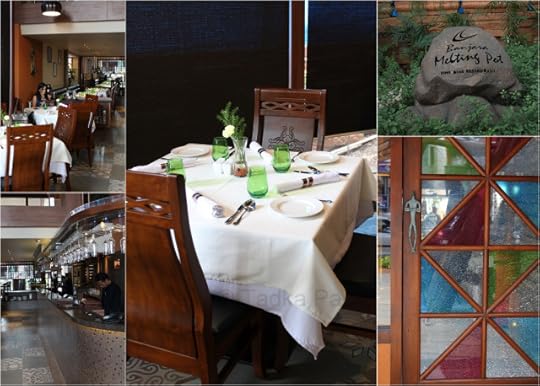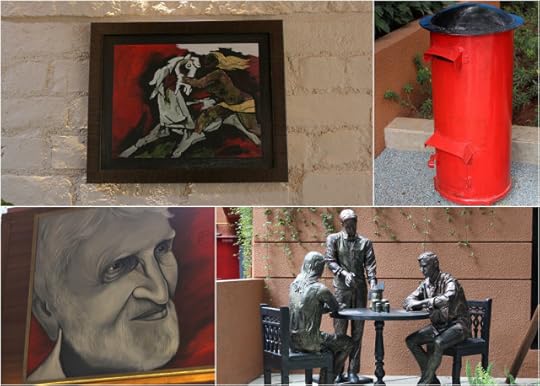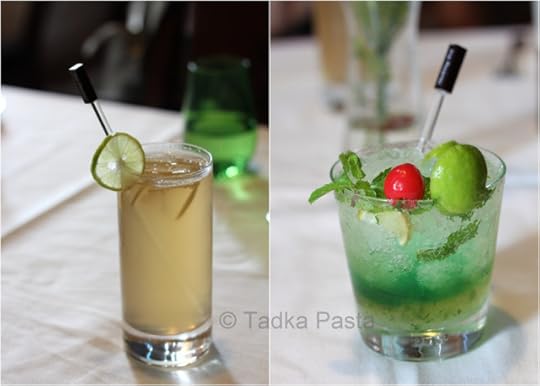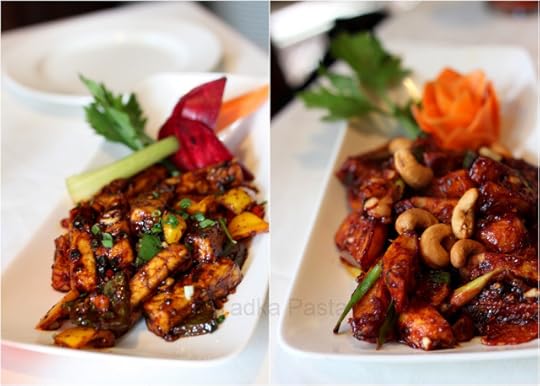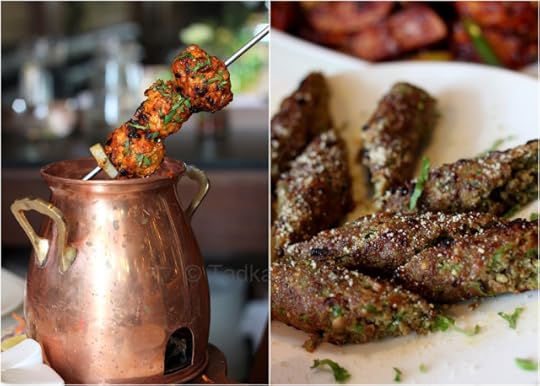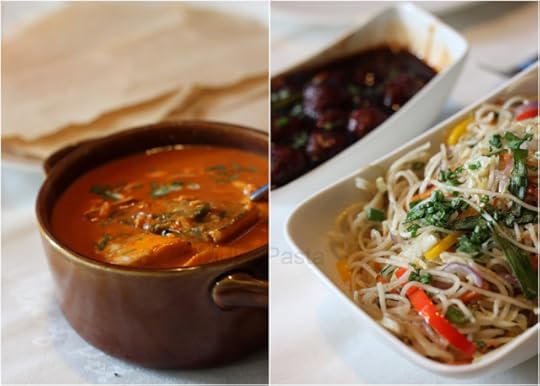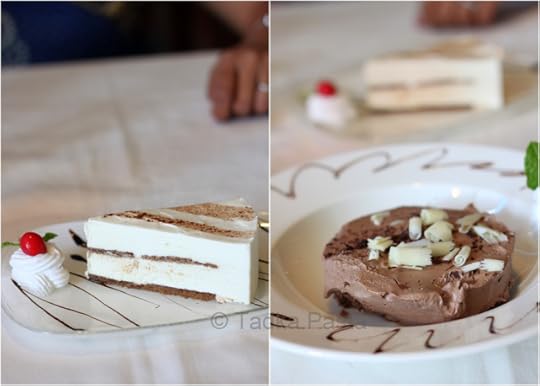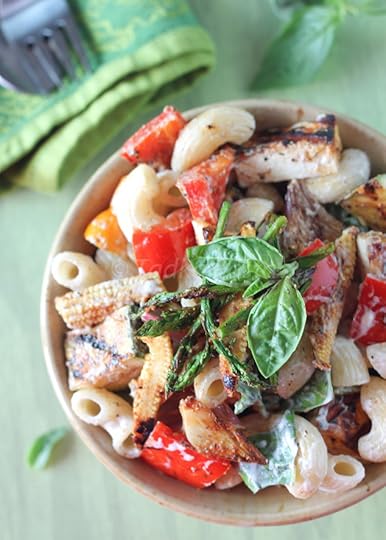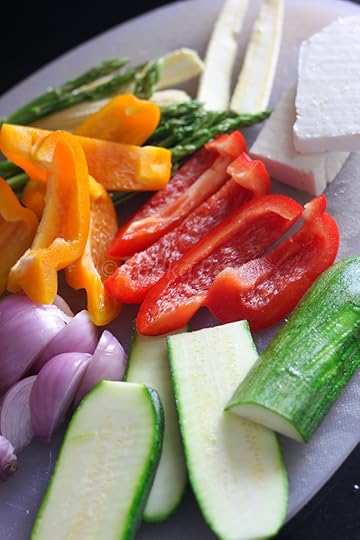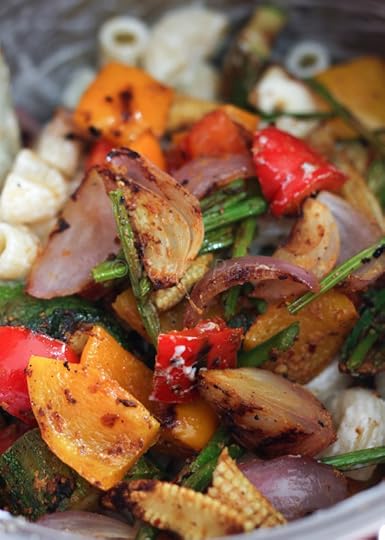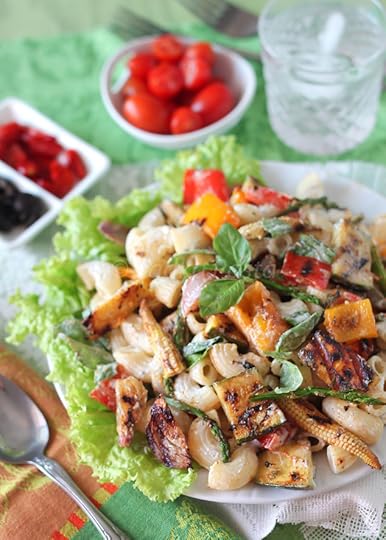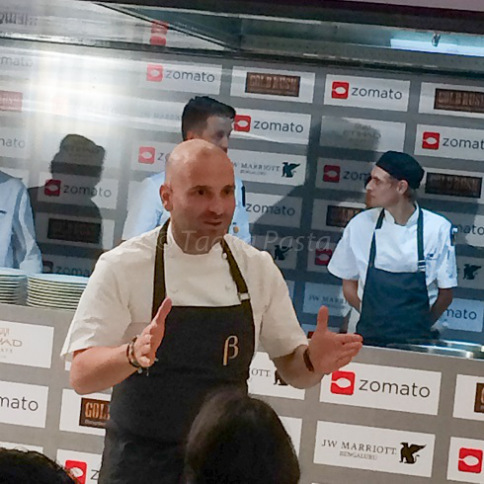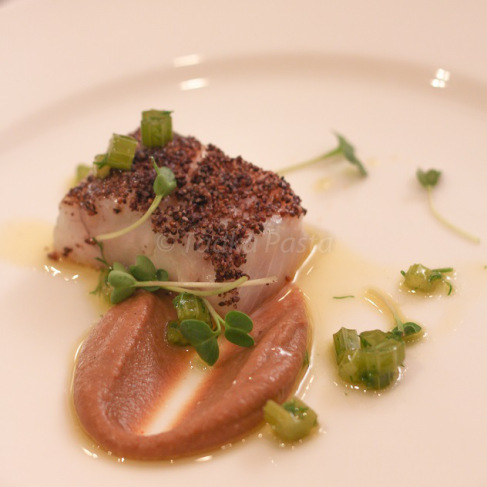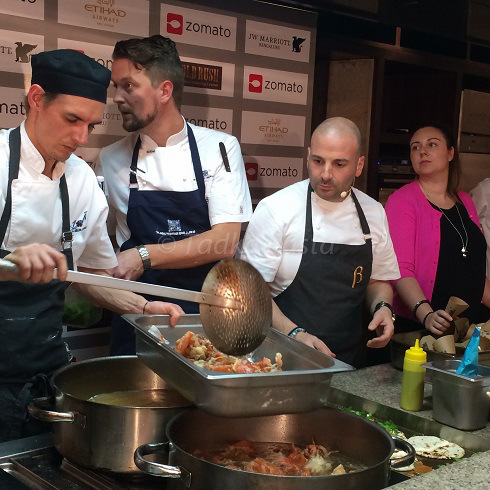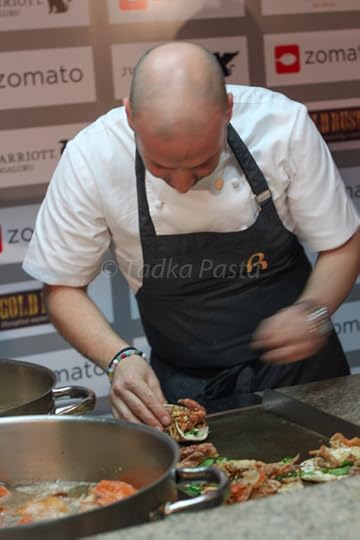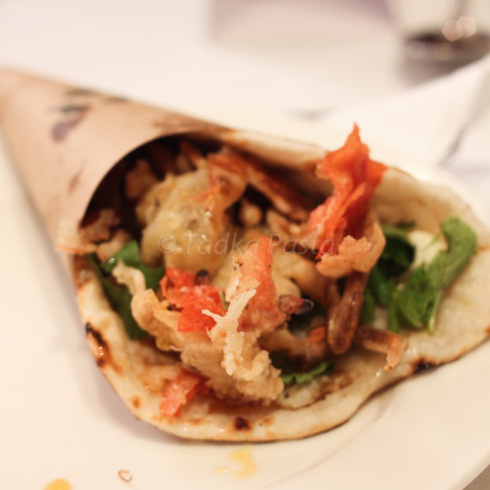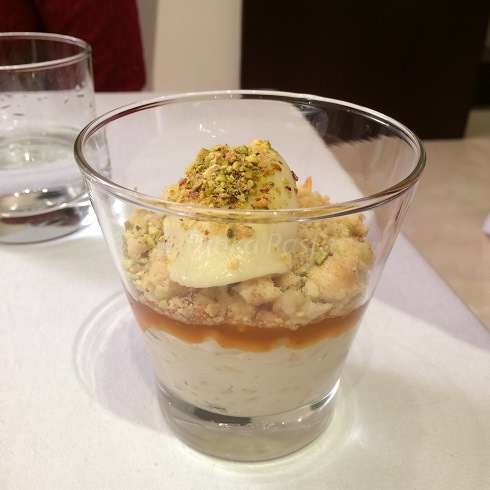Ranjini Rao's Blog, page 6
March 14, 2016
Dehlvi Cuisine: A Jama Masjid Jamboree
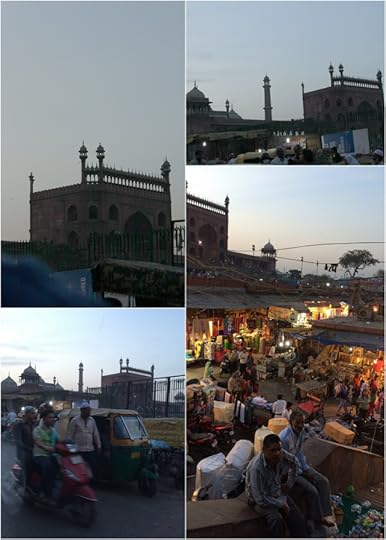
The beautiful Jama Masjid in Purani Dilli is a sacred monument that is like a beacon of devotion and spirituality for Muslims in India. Built in the time of Shah Jahaan, it stands serene, like a grand old lady, weathered gracefully through turbulent times but with its life force unscathed and still charismatic.
We were ten food bloggers and writers, invited by the JW Marriot Aerocity Hotel in New Delhi on a three-day showcase of Dehlvi Cuisine, which is basically the cuisine of Old Delhi. The vibrant cuisine of our national capital we were told, has evolved through the centuries, peppered with umpteen influences, from the rich traditions of the Persians and Mughals, from the Hindus who stuck strong to their vegetarian roots, from the Punjabis who poured into Delhi in droves, bringing their love for parathas and desi ghee, and from so many other cultures.
One of the main hotbeds of food that Delhi is known for is the predominantly Muslim area around the Jama Masjid. This is not really a tourist-friendly market that the faint hearted should venture into without adequate preparation. And since it was my first visit to this locality it was good to have the competent guidance of the JWM chefs and staff, who took the group around the crowded streets and maniacal traffic that is pretty much typical of these bylanes at most times of the day and night.

Our first stop was the Masjid itself. With the evening prayers having just gotten over at sunset, it was a beautiful time to visit, the gathering dusk adding to the hush of reverence and devoutness in the atmosphere. Having a guide to take you around the monument is highly recommended, as is true with most historical places, but especially here since it is a place of worship. We were guided around the Masjid gates, courtyards and corridors by a knowledgeable and articulate lady from India City Walks. She briefed us on the history of the area and related some interesting anecdotes, beautifully setting the scene for the evening ahead.

A platter of Shahi Tukda, Rose Sherbet, Jama Masjid after sunset, a Paan maker
The streets and lanes around the Masjid are brimming and pulsating with life. There are stalls selling everything from flashy jewelry and psychedelic clothes to utensils, carts hawking food of all descriptions, scores of pedestrians intent on going their way with single-minded purpose, and through all this, the crazy traffic and stray animals rounding off the pandemonium.
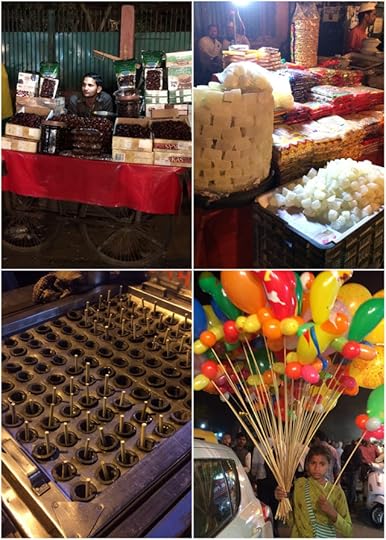
A cart selling dates, Petha (candied white pumpkin), a balloon vendor, specialised Kulfi cart
Since there are umpteen food hawkers and restaurants in this area, it is quite difficult to know where and what to eat. Some prior research or an experienced companion will be of great help, or else you might just have to let your nose guide you from stall to stall. It also helps to pace yourself, perhaps share the plates of goodies with some pals, so that you can taste a whole lot more variety. The instinct is to eat simply everything but sadly, practical tummy-related constraints make that quite impossible.
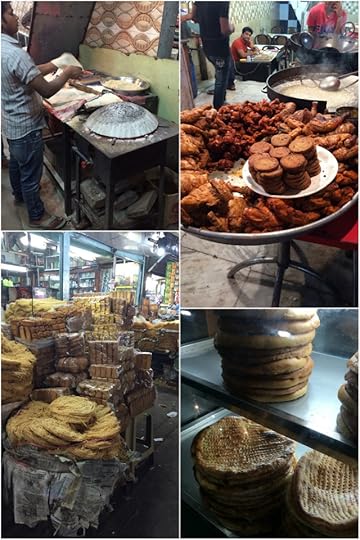
Romali rotis being made, assorted kababs at a stall, piles of Sheermal and Bakkarkhani, Pheni/vermicelli that you can buy to dunk in sweetened milk.
There is something to gawk at at every turn, this is a veritable Mecca of food, with the choicest of grilled and fried meats, refreshing sherbets to counter the heat, syrupy, slow-cooked desserts and exotic savouries. You could feast on the robust, savoury meat porridge that is Nihari, sample kewra-scented biriyanis cooked in signature styles, taste rich, lush curries flavoured with mace, cardamom and saffron, and then, as a seasoned traveler suggested, buy thick slabs of breads to bring a taste of the cuisine back home to your table.
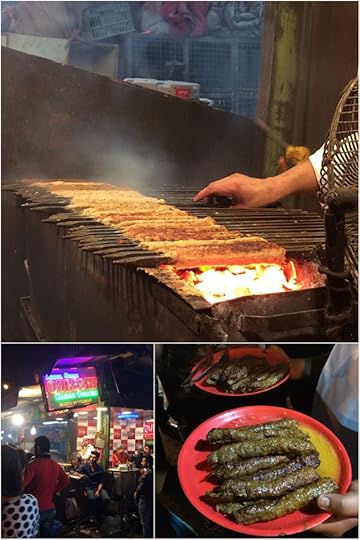
Kababs at Qureshi’s are a must-have, we were told, and these were truly sensational. Moist, juicy with the ends deliciously crisped up from the hot flames, a perfect marriage of spices and minced meat, these seekh kababs may not look fancy but they were definitely finger-licking good. So good that the chutney and onions were pretty much ignored for the most part. You can watch the swift and nimble hands of the kababchi make up the seekhs and grill your meat, and then carefully cross the road to a tiny eating area or just munch on them by the side of the street like we did.

Fried chicken kababs are another popular dish in this area, and the Haji Mohd. Hussain stall, with great vats brimming with smoky hot oil outside is the go-to place for these. Probably created with an eye towards the Hindu population that descends in hordes to feast here, the fried chicken is spicy and crunchy on the outside, but perfectly succulent and juicy within. As with most of the food served here, the preparation is quite a process, including marination of the chicken with spices, frying at a lower temperature and then a final couple of minutes in super hot oil to crisp and finish the dish before serving with chutney, lemon wedges and sliced onions.

Dinner was at Al Jawahar, a comfortably air conditioned multi-storied restaurant which seemed like an oasis of peace after the tumult of the streets. Al Jawahar serves Kababs, Biriyani, Nihari and Curry dishes with piles of fresh-baked Tandoori breads. Since the chefs from JWM had already curated the menu for us, all we had to do was sit back, down some ice cold Thums Up and await the feast.
The gravy dishes that were served to us in quick succession included Chicken Ishtoo (Stew), Mutton Qorma, Pasanda and Kaleji. These were mopped up with some excellent Khameeri Rotis, these are made with fermented dough, so the look, taste and texture is quite different from the usual tandoori rotis served at most restaurants.
Though the meat in all these curries was really tender and expertly cooked, the curries themselves seemed to be over-generously doused in oil, making it hard to do more than taste each one. Another specialty – the golden-brown Kashmeeri Sheermal made an appearance, this was pleasantly yeasty and slightly sweet.
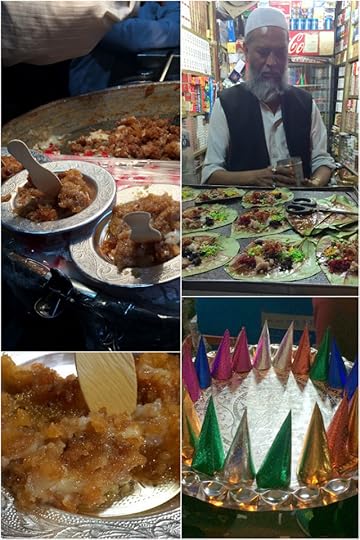
The favoured dessert in these parts is the shahi tukda and there were huge platters of it everywhere at the sweet shacks. Slices of bread are deep-fried and then simmered in thickened milk until the consistency is almost jammy, and the whole concoction just glistens with fat. This is then topped with thick layers of khoya and cream, and garnished with bright red cherries or tutti frutti. This dessert looked rich, gooey, decadent and heavy, and each bite tasted exactly like that, but thankfully the serving wasn’t too large and the sweetness was fairly moderate.
A fitting end to the meal was mouthfuls of sweet pan, filled with various digestives and sweeteners and served well-wrapped in multi-coloured foil cones.
The evening at Jama Masjid was truly memorable, an assault on the senses that I am unlikely to forget anytime soon. Some of the pictures you’re seeing may be a bit blurry and most of them are taken with the phone camera, but I hope that they capture the chaos, vitality and colours of the market, and the vibrancy of the food.
This is the first of three posts in the Dehlvi Cuisine series. Don’t miss the next post that’s a trip down the legendary Chandni Chowk area, and the last one tying the whole incredible Delhi experience together, at JW Marriot Aerocity.
Note: This trip was sponsored and curated by JW Marriot New Delhi Aerocity but the thoughts expressed here are our own.


Dehlvi Cuisine: Chandni Chowk

Stuffed Bread Pakoras, Kachoris, Biscuits and Rusks, Kancha Soda
I’ve been to Delhi umpteen times, sometimes passing through to catch a train for Calcutta or Amritsar, visiting aunts and cousins on other occasions, attending weddings and workshops, and there have been some some serious shopping trips too. But one area that I’ve really not explored in all these years, including a year of living in Delhi, is Purani Dilli.
The three-day Dehlvi Cuisine food trail hosted by JW Marriot Aerocity, New Delhi was the perfect opportunity to correct this most unacceptable oversight :) The first post in this series here covers the predominantly non-vegetarian cuisine of the Jama Masjid by-lanes. This post is all about the Chandni Chowk area in Old Delhi, which is renowned for all kinds of delicious, mostly vegetarian fare.

Our Chandni Chowk adventure started with a trip on the very efficient Delhi Metro, which got us to the nearest station – Chawri Bazaar – in no time. Cold towels and a cooler of chilled water bottles awaited us as weren’t up the steps from the station, courtesy the ever-smiling JWM staff! Honestly, these were not really needed since the Metro journey was very comfortable and quick, but you won’t catch us saying no to such solicitous hospitality!

A cavalcade of rickshaws bearing signboards saying – ‘Dilli ke Dehlvi Rang JW Marriot ke sang’ had been organised to take us on a tour of the main bazaar before we hit the food stalls.
Riding in a rickshaw is something that I hadn’t realised I’ve missed..it was so much fun to just sit back and look around the bazaars. Another advantage of a rickshaw is that one can actually take some passable pictures, unlike if you are in an auto or car :) The rickshaw-walla kept up a steady commentary on the areas that we were passing through and it made for a very interesting trip.

This part of Delhi isn’t a touristy trap but a busy, working, wholesale market, mostly with shops stocking similar items grouped together. The main roads are wide, like everywhere in Delhi but they are cluttered and congested with all manner of hawkers, vehicles and carts.
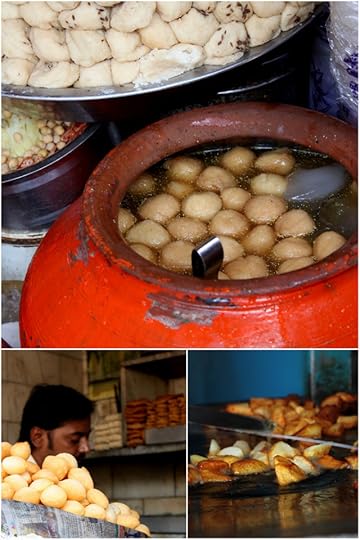
Kanji Vadas, Potatoes being fried for Dilli-style Aloo Chaat, Gol Gappas
Before we get on with all the things we ate, here are some pictures of goodies that we gawked at and took pictures of, but unfortunately couldn’t try :)
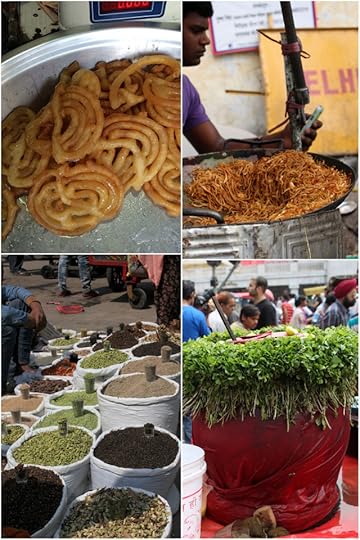
Jilebis, Hakka Noodles, Pudina Shikanji (Lemonade) and a stall selling spices.
Apart from the shops and stalls there are rows and rows of food carts, as well as vendors on the pavement with all kinds of goods, and one can spend hours just looking at their wares.

Papdi chaat and Bhalla stall, a beautiful vintage building, display at a stall selling extruders to make chaklis, Chillas (besan pancakes) stuffed with paneer and veggies

Faluda glasses, Kulfi shop, Kulfi cart, Rabdi

Our first pit-stop was the Natraj Dahi Bhalle Wala, a shop tucked into a corner, with a counter and outdoor cooking area downstairs, and seating plus a small kitchen on the first floor. The dahi bhallas here are popular, and rightly so. They were super soft and had soaked in some of the seasoned fresh yogurt they were dunked in. Topped with the tangy-sweet sonth and their signature roasted masala, they were just delicious!

The Aloo Tikkis that came next were simple and scrumptious. The tikkis had a filling of spiced dal inside and were served with the usual green chutney and sonth. This is one place that does the basics really well, and pretty much lives up to all the hype.

The Ram Laddus that we had next were as frill-free as the aloo tikkis, and just as delicious. These are savoury fritters made with soaked, ground and fermented moong dal. The batter is fried up into crisp laddus and then served sprinkled with a special masala, chutney and shreds of radish. It is fairly hard to stop at one laddu since they are hot, crusty, flavourful and just so good.

One of the most famous landmarks in Chandni Chowk is the Parathe Wali Gali. These are stuffed and deep-fried breads that taste more like stuffed pooris then parathas. This lane is very narrow and the original Parawthe Wala is really crowded, so this experience may well be avoided in favour of more chaats and sweets.
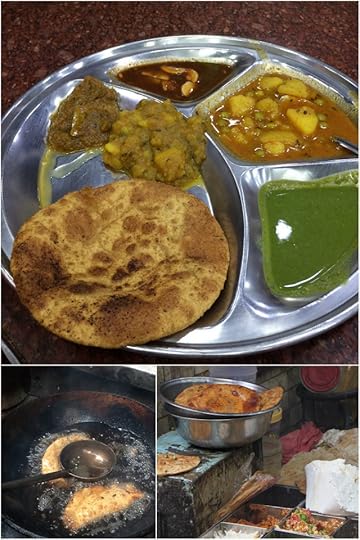
While the parathas were a trifle disappointing, the accompaniments were stellar. A spicy aloo ka saag was balanced by the sweet sonth with slices of banana. There was also a spicy green chutney, kaddu ki subzi and aloo-mutter, all very good. A bowl at the table offered a tangy mixed vegetable pickle.

Another legend in these parts is the Daulat Ki Chaat, an airy, gossamer concoction of frothed milk and cream that is usually available with cycle vendors in winters. The fluffy souffle is scraped into a plate, and castor sugar and powdered khoya is added on top before serving. This was super light and a truly melt-in-your-mouth kinda dessert.

A visit to the Gurudwara Sis Ganj Sahib beautifully rounded off this exciting excursion. The atmosphere inside the Gurudwara was peaceful and reverential, and the floral decorations were lovely.
With the strains of the Gurbani ringing melodiously in our ears and the rich earthy sweetness of the Kadha Prashad in our mouths, we bid adieu to this fascinating place that has so much more to offer than what we experienced. Chandni Chowk surely calls for another visit, but on an empty stomach, on another day! That’s something to look forward to.
Note: This trip was sponsored and curated by JW Marriot New Delhi Aerocity but the thoughts expressed here are our own.


March 13, 2016
Protein Power: Sprouts Theplas
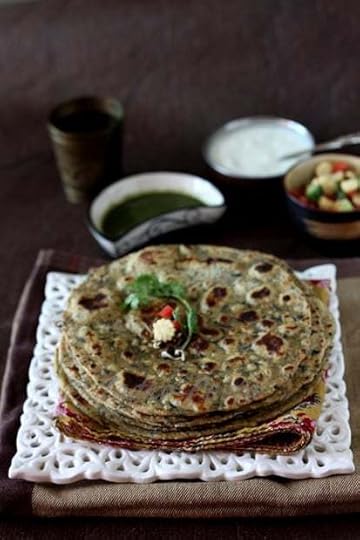
There was a time when Thepla, Dhokla, Khakhra were a bunch of strange-sounding foods that belonged to a distant cuisine. Of course there were times when we were drawn close to them, thanks to the friendly Patel's store in the suburbs where we lived, back in Chicago. There would be a plateful of spongy, turmeric-yellow Dhoklas topped with a most inviting seasoning of mustard, asafetida and slit green chilies, by the billing counter, screaming to be had. A dozen home-made Methi Theplas slid into a ziploc and arranged in a leaning tower right by the Dhoklas, would be bought impulsively...
Protein Power: Sprouts Theplas
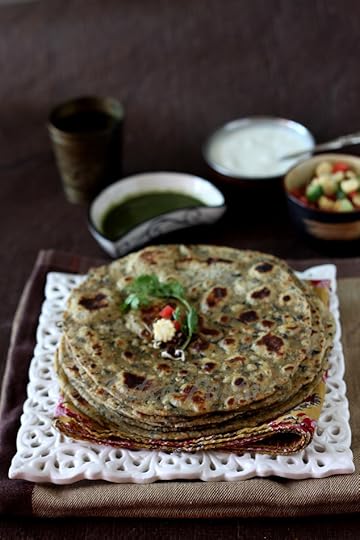
There was a time when Thepla, Dhokla, Khakhra were a bunch of strange-sounding foods that belonged to a distant cuisine. Of course there were times when we were drawn close to them, thanks to the friendly Patel’s store in the suburbs where we lived, back in Chicago. There would be a plateful of spongy, turmeric-yellow Dhoklas topped with a most inviting seasoning of mustard, asafetida and slit green chilies, by the billing counter, screaming to be had. A dozen home-made Methi Theplas slid into a ziploc and arranged in a leaning tower right by the Dhoklas, would be bought impulsively on many an occasion, and eaten hurriedly with bowls of too-thick yogurt and a liberal sprinkling of sugar. And the lesser said of the Khakhras, the better – considering how our eyebrows would break into a happy dance upon sighting a new flavor on the shelves. And how, once procured, they’d be used as a base for virtually everything, ranging from masala corn chaat to super nachos!
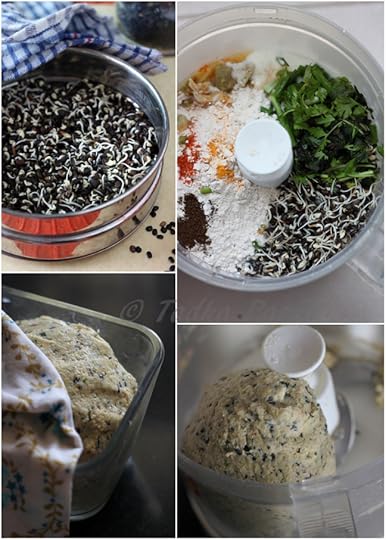
Thus and so, once we had had a taste of these delicacies, we realized just how high their deliciousness quotient was, not to mention nutrition and shelf-life quotients. We made them our own, trying out various permutations and combinations of ingredients, given how well the recipes lent themselves to versatility. Our Tiranga Dhokla has stood the test of time, needless to say. Our Black-eyed Peas Salad has long been doing the rounds on broken crisps of Khakhras, too. And now we present a fortified version of Tadka-style Theplas. This recipe is a keeper, and the sooner you try it the better!

Sprouts Theplas
(Makes 8)
1 cup fresh bean sprouts
1.5 cups whole wheat flour / atta
1/4 cup curd
2 spring onion greens
1/4 cup coriander leaves
1/4 cup mint leaves
1 teaspoon ginger paste
1 green chilli, de-seeded and minced
Salt to taste
1/2 teaspoon red chilli powder
1/4 teaspoon turmeric (or more if you like your theplas yellow)
1 teaspoon roasted cumin powder
1 tablespoon ghee
About 1/4 cup oil for shallow frying
Put all the ingredients except the oil in the bowl of a food processor*. Run the machine for about a minute, or until the sprouts break down and are ground up into the flour.
Add water by the tablespoon and process until the dough comes together and forms in a ball. Let the machine knead the dough for a few seconds.
Remove the dough from the processor and roll it into a ball. Keep it in a bowl and cover with a damp cloth. Set aside to rest for 15-20 minutes. This step can be done ahead of time and the dough can be refrigerated, after the resting period, for a few hours.
When you are ready to make the theplas, divide the dough into 8 parts. Shape each part into a ball and keep covered.
Meanwhile preheat an iron tava or griddle.
Take one piece of dough and roll it out thinly to about 6″ diameter, using a little dry flour as needed to keep it from sticking. Place the thepla on the tava.
Cook the thepla on medium heat, turning to cook both sides. Once it starts getting browned, smear a little oil on each side.
Remove the cooked thepla to a paper towel kept on a thick kitchen towel. Cover and keep warm. Make the other theplas the same way.
Serve hot, warm or at room temperature, with curd, pickle or chutney and a bowl of salad.
*To make the dough without a food processor, first grind up the sprouts finely in a grinder. Then put all the ingredients in a large bowl or plate and knead, adding enough water, as needed to make a dough.

You can use any bean sprouts for making these theplas. Here we’ve used heirloom black horsegram, but moong dal sprouts work equally well.



March 2, 2016
Soup Splash with Carrots and Leeks

We’ve had a really short spring in our part of the world this year, with the cool winter days transforming almost overnight, and giving us a taste of summer even in the usually balmy month of February. Because of this the vegetable markets seem a little confused, as if the crates of winter veggies are unwilling to give way to the cartloads of mangoes and watermelon. We’re still seeing a lot of winter produce, like these pink carrots that are often called ‘Delhi carrots’ here in Bangalore since they come from the North, fresh green peas, turnips and oranges.
Pink carrots are super sweet, crunchy and flavourful, and we use them in everything while we can get our hands on them, from carrot cake to eclectic stir-fries. Today we’re sharing a recipe for this beautiful blushing pink soup that we made with them, and it is all about the carrots here, with sweet onion-y nuances from leeks, and peppy dashes of pepper and fennel seeds.
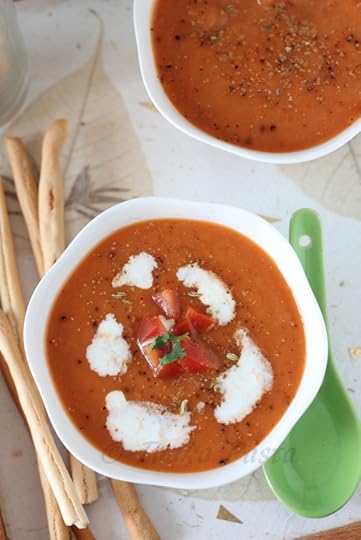
Carrot-Leek Soup with Fennel
(Serves 4)
3 large carrots
2 leeks
4 cloves garlic
1 tablespoon olive oil
Salt and pepper
3 cups vegetable stock
1/2 cup milk, or as required
1/2 teaspoon powdered fennel seeds
Wash, peel and chop the carrots. Trim the leeks and wash them in a basin of water. Chop the leeks and garlic.
Warm the olive oil in a large soup pot. Add the carrots, leeks and garlic. Cook on medium high heat for about 5 minutes, stirring often.
Season the vegetables with salt and pepper, lower the heat and cook for another 5 minutes.
Pour the stock into the pot and bring to a boil. Reduce the heat, cover and simmer for about 10 minutes.
Cool and blend the soup to a smooth consistency, or you can use an immersion blender to do this.
Transfer the soup back to the pot, adjust to your desired consistency with milk or stock. Stir in the powdered fennel seeds. Check for seasoning and adjust.
Serve hot!


February 12, 2016
Light and Love-ly – Berry Heart Ice Pops
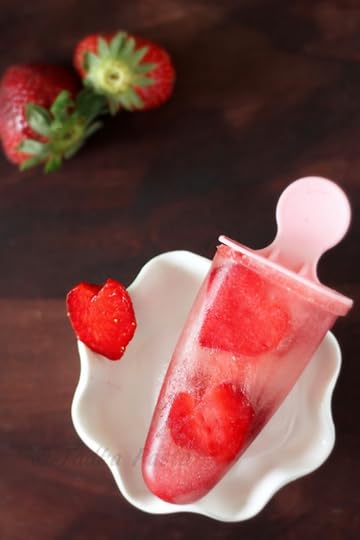
Come February and there’s no escaping the Valentine’s day frenzy, whether one is online or around the real world. Kitschy, frilly heart-shaped cushions, mushy cards and teddy bears clutching corny notes suddenly sprout everywhere, including in the windows of our very enterprising neighborhood ‘fancy shop’. The flower-vendors get geared up to fleece their hapless patrons for that must-have bunch of red roses, trussed up tight with the obligatory shocking pink satin ribbons. Romantic movies line up to release on the all-important Friday before V-day, bringing even more mushy sappiness to the already saccharine-soaked atmosphere. And let’s not forget to brace for the overdose of confectionery and chocolate that’s customary at this time of the year.
If you thought that we’re excessively cynical about this day of love, let us assure you that this isn’t the case. We enjoy and celebrate this holiday with our loved ones year after year, but the glut of commercial and meaningless merchandising that this charming celebration is often turned into, has brought out the rebel in us. So, this year we’re planning a quiet, fuss-free holiday, with a meal that doesn’t tick all the Valentine’s Day check boxes, but nourishes love for our bodies and those of our dear ones.
But since we really can’t let the day pass by without a few red hearts scattered around, we carved up some ripe berry hearts, dipped them in honey-sweetened coconut water and turned them into these super cute and adorable ice pops. Three ingredients and ten minutes is all you need to put these together for your family, or just for the love of you!
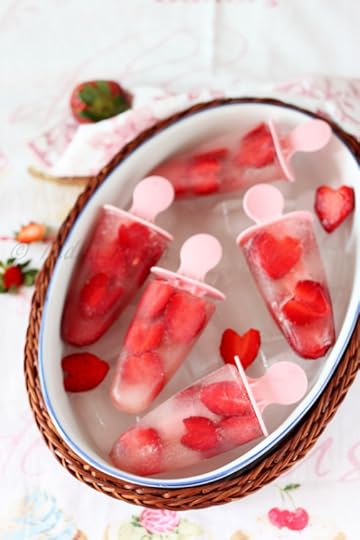
Berry Heart Ice Pops
Makes 5-6
8 ripe strawberries, preferably triangle-shaped
1 cup coconut water
2-4 tablespoons honey or agave nectar
Hull the strawberries and cut a rounded V at the top. Now slice the strawberries into 2 pieces vertically, to get heart shapes. If the berries are very big you can slice them into 3 or 4 hearts. You could also use a small, heart-shaped cookie cutter to cut out the hearts.
Divide the hearts between the popsicle moulds (3-6 per pop). Place the hearts so that most of them stay the right side up. Set the moulds aside.
Stir enough honey or agave into the coconut water to sweeten it to your taste.
Pour the coconut water blend into the popsicle moulds.
Place the sticks into the pops and then freeze for 4-6 hours or overnight.
To remove the pops, dip the mould in a bowl of tap water for a few seconds or until the pop pops out.
Enjoy!

Note: You could also use white grape juice in place of the coconut water, in this case you would not need the honey to sweeten.
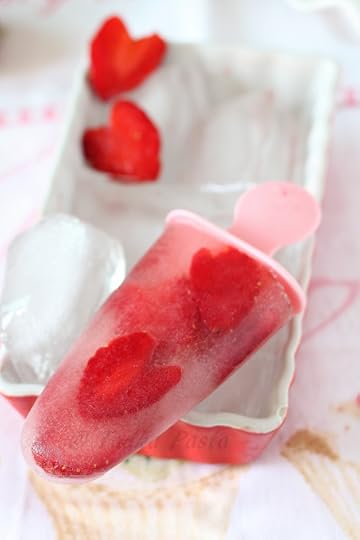


November 23, 2015
Restaurant Review: Shang Palace
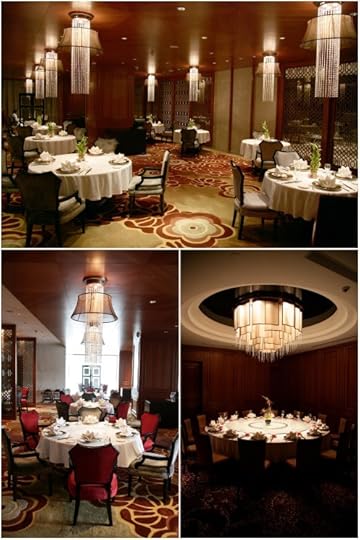
Pics by Shangri La Hotel
The Shangri-La Hotel opened its doors to Bangalore a few months ago and now offers a range of fine dining experiences, including the specialty Chinese restaurant, Shang Palace. The restaurant serves regional cuisine from many parts of China, with a spotlight on Sichuan dishes, and of course this works all too well with spice-craving Bengalureans.
It’s a long walk down a nondescript corridor to the Shang Palace but don’t fret, because a dramatic, yet comfortable setting awaits you. The subtle Chinese accents and vibrant decor are offset by the theater of spectacular burnished gold chandeliers that seem to run as a theme throughout the hotel.
We were whisked away to one of the private dining rooms in the restaurant, and this we found lets you soak in all the extravagance of the restaurant in a convenient, intimate setting, complete with a powder room and a dedicated personal host for your party. Apart from two private dining rooms Shang Palace also offers alcoves that can work as semi-private dining spaces for groups, and there is a prominent central dining area, the heart of the restaurant.
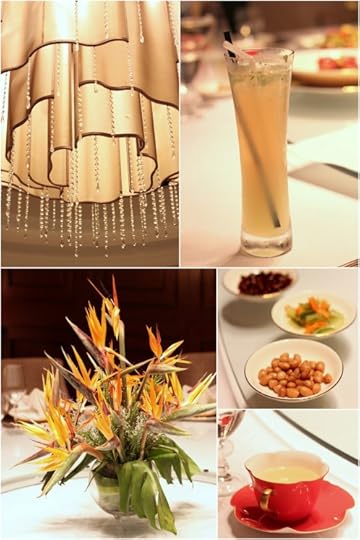
The Shang Palace kitchens are presided over by Chef Lin Lin Yang, and we learnt that many of his team are Chinese nationals, thus bringing us the real deal – Chinese cuisine without the customary tempering and moderation for Indian taste-buds. The food is authentic, the flavours are punchy and the entire experience is superb.
The bi-lingual menu is extensive and accessible, with items being ranged into easy-to-map sections like Hot Appetizers, Cold Appetizers, Dim Sum, Barbecue and Marinated, and Hot Pot, apart from the customary classifications. Vegetarian choices are plentiful and interesting, and one of the cuisines being served is Chinese Vegetarian. The pricing is very attractive, with the restaurant being focused on giving their guests value for money.
An extensive wine-list, with the ease of ordering wine by the glass, is available, including a few themed mocktails, and they also serve a range of Chinese teas and herbal drinks. We started with a hot cup of tea in a pretty red and gold cup and saucer, and this just melted away the stress of Bangalore traffic, leaving us primed and ready for the spectacular spread that was coming up.

Boiled peanuts (bottom right in the above picture) that had picked up just a hint of sesame dressing, and a little dish of pickled carrots and cucumbers were at hand to nibble on as we waited for the appetizers to arrive.
The Chinese Cucumber Salad (top left) generously dressed in zesty soy, was super crunchy, and this is one thing you can eat a lot of while still saving room for the mains. If you’ve never tried lotus stem, the Crispy lotus stems (top right)is a good option..thinly sliced slivers of the stems tossed in chilli and hoisin, the Chinese barbecue sauce.
The Pan fried mushroom (bottom left) bun that we tried from the vegetarian dim sum menu was filled with an interesting shiitake mushroom mince, this is good if you are looking for a more substantial starter.
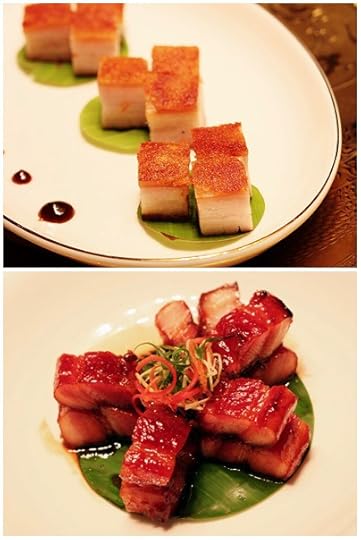
For the pork lovers we’d recommend both the dishes we tried. The Roasted crispy pork belly (top in the above picture) was superlative – little cubes of porky heaven, a total delight, from the crackly-crisp skin to the juicy meat inside. Served with fine granulated sugar to dip in, and a dark dipping sauce, these are most likely to be the first item that gets grabbed off its plate! The spectacular crown of Guangdong style roasted pork (bottom) had been marinated and then roasted to juicy succulence, and the colour on the pork was truly magnificent.

The other dim sum that we enjoyed was the traditional Cantonese Prawn Hargau (top right in the above picture) that had all the trademark moist and mellow appeal of a well turned out steamed dumpling.
If you can’t imagine a Chinese meal without Chilli Chicken, then the Chongqing chilli chicken (bottom left) is quite perfect. The judicious addition of Schezwan peppercorns here makes this dish interesting. If you leave these tiny bombs too long on your tongue you are likely to enjoy a true tongue-tingling experience, and this is all we’re going to disclose here :)
The Crabmeat soup (bottom right) with asparagus and egg drop seemed a trifle pedestrian after the explosion of textures and flavours in the other starters, so we dutifully tasted it and then sat back to await the main dishes. 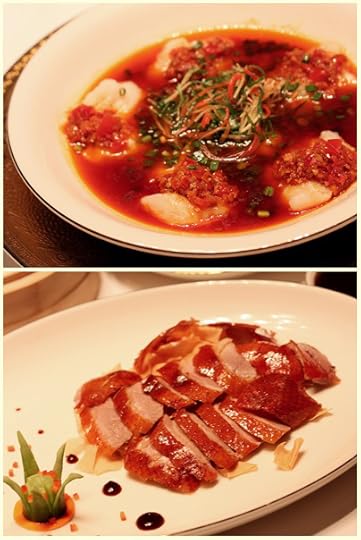
The Hunan style steamed fish (top in the above picture) is not something that would usually feature on our order in a Chinese restaurant, but this preparation is definitely a game changer. The delicately steamed fish fillets, fork-tender and juicy, were dunked in a soupy soy sauce laced with pickled chillies, and we really enjoyed this.
The Roasted Beijing duck (bottom) is another signature dish at Shang Palace. Moist slices carved out of a perfectly roasted duck with the crispy skin intact are served with scallions, cucumber, sweet bean sauce and pancakes. The hostess quickly put together rolls for us using the pancakes, each with a succulent slice of duck, and the accompaniments, and these were delicious!
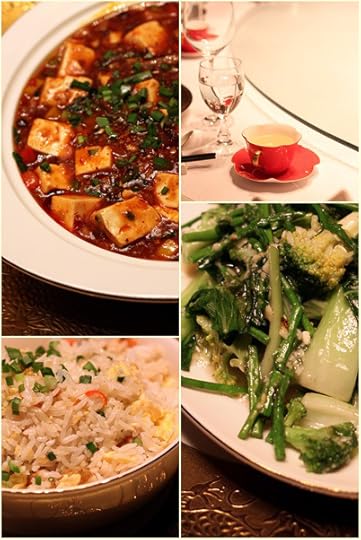
We’re huge fans of tofu, and found the Mapo tofu (top left in the picture above) excellent. The soft cubes of tofu were offset by a luscious chilli bean gravy, with bamboo shoots and mushrooms adding texture. This went well with the Chinese fried rice (bottom left) that was served in vegetarian and egg-laced versions.
Stir fried Chinese greens (bottom right) are a lovely, wholesome side that diners often miss out on. These were garlicky and tender-crisp, with asparagus, broccoli and pok choy adding their flavours to the dish.
Authentic dishes and flavours, modest pricing and generous servings are all things to look forward to here, along with beautiful ambiance and proficient service. The Shang Palace is going to be our new favourite destination when the craving for Chinese hits, and to be honest, it does hit us on a fairly regular basis. We’d recommend that you reserve your table ahead of time though, the restaurant was packed and busy on the Friday evening when we visited.
Address: Shangri La Hotel, Palace Road, Bengaluru 560052
Timings: Lunch – Noon to 3pm ; Dinner 6:30 to 10:30pm


September 15, 2015
Restaurant Review – Banjara Melting Pot
Lets start with saying that multicuisine restaurants don’t often feature on our lists of favourite places to eat at. Menus that run to pages, covering a whole plethora of dishes from different cuisines that really have nothing in common, just leave us confused and wary. We would be more at home with a choice of 3-4 chef’s specials scrawled on a chalkboard. That said, when we received an invitation to review the new Banjara Melting Pot at Koramangala, we were tempted to go because, one, there were several good reviews floating around about the food, and two, we were intrigued that the restaurant had opened in what had been MF Husain’s former Bengaluru home!
The restaurant is located right on the bustling 80 feet road in Koramangala, in a stand-alone building with a bit of greenery outside. Once the stained glass door closed behind us, it was pretty quiet inside, and there’s a little patio in the back too, if one wants to venture outside. A large bar kind of closes things up a bit, but the floor to ceiling windows balance it out by bringing in generous amounts of light. The ambiance inside is cool and classy. There’s a lot of exposed brick, stone and wood in the decor, and most of the structural elements in the house have been retained from the artist’s time.
A painting of the artist and prints of some of his signature creations reminded us that we’re dining in what used to be his home. Other memorabilia included a red letter box that he had placed outside his home, confusing neighbors and residents who would mistakenly post their letters in it!
We started our meal by selecting our drinks and appetizers from a menu on a tablet. This was a nice touch and quite convenient, though our server was on hand to explain and help. Contrary to our expectations, the menu wasn’t too elaborate. We found a lot of tandoori and classic north Indian dishes, with some southern specialties, and a section devoted to Asian cuisine.
Since both of us were driving that afternoon, we opted for mocktails. The drink on the left was a ginger-ale based cooler that was missing some sweetness and the touch of lychee that had been promised in the menu. The other beverage, a minty virgin mojito was pleasant and both drinks were light enough to whet our appetite without filling us up.
For the appetizers we mostly went with the suggestions from the restaurant folks. The vegetarian dishes – Asian-style, were Cottage Cheese with Three Peppers and Kung Pao Potato. We weren’t bowled out by either of these – the texture of the paneer was on the chewy side and the potatoes were a trifle over-sweet.
The non-vegetarian plates were both very good, though. The Murgh Lalwari Kabab (on the left, above) was smoky tandoori grilling at its best, perfectly spiced and terrifically succulent on the inside because of a deliciously creamy minced spinach and cheese filling.
The Lucknowi Seekh Kabab (above, right) was done pretty well..the meat was fork-tender and assertively flavoured with green chillies and coriander.
For the main course we decided to experiment with Kori Rotti (above, left) – a Mangalorean dish which consisted of a red fish curry and the rotti – brittle cracker-like bread. The rotti was to be soaked in the curry and eaten. This was truly delicious – the crisp rotti softened and absorbed the thick curry, resulting in a melange of textures and spicy flavours in each bite. This dish can be ordered with chicken too, if you prefer that to fish.
The other combo that we tried was Spicy Corn Balls in Sauce with some Panfried Noodles (above, right) to go with them. The noodles were pretty colourful, with lots of shredded peppers and other vegetables, and both these dishes had the typical Indo-Chinese flavours.
And then, it was time for dessert. The Tiramisu looked perfect but lacked flavour. We’d recommend that you go with the Chocolate Mousse, which was richly creamy and high on chocolaty-ness.
When we do visit multi-cuisine restaurants, we usually find that it is safe to order Indian food, and we’d recommend that you do that here too. All the Indian dishes we tried were really nice and we’d love to go back and try more of the tandoori and seafood menu at Banjara Melting Pot. But, if you are with a large group or with kids and would like to add on some noodles or Chinese starters to your order, then this place would work pretty well for that. A special mention for the service..quick, unobtrusive and helpful!
Banjara Melting Pot
32, 80 Feet road, 4th Block, Koramangala, Bangalore
Phone – 080 49653253
Meal for two – 1100 plus taxes
Parking – Valet
Credit Cards – Accepted


August 18, 2015
Salute to Summer – Creamy Pasta Salad with Grilled Veggies
If there’s one ingredient that is used and loved in many cuisines around the world, it is yoghurt. It was one of the first foods that we fed to our babies, and is a staple on our dinner tables every night, either on its own, or in a raita or curry. Later we discovered even more magical ways of using it – for example, in cakes and muffins, where yoghurt’s tang and richness contributes to tender and tasty baked goodies. Yoghurt panna cottas, parfaits, popsicles, semifreddo and gelato are all delicious, and these desserts play on yoghurt’s creamy tartness to impart a decadent mouth-feel while still keeping things light and refreshing.
While many of the desserts we’ve tried with yogurt are Italian, it seemed that we had rarely seen yogurt used in savoury Italian dishes, unlike Greek food where it is a mainstay. A little digging around the internet however showed us how little we knew. Italians were using yoghurt in all sorts of applications like tart fillings, inside ravioli, fritters, sauces, marinades, bechemel and more. And thus it came about that we thought of creating a summery dish that showcases this beautiful ingredient in one of our favourite cuisines – Italian.
The other ingredient that’s a star in our salad today is vegetables. When one looks at vegetables in Italian cuisine, it is fresh, local and seasonal produce that is used. And then, there’s not much that’s done to it..just quick cooking and simple dressings that don’t mess with the integrity of the flavours and textures.
So, for our pasta dish today we just cut the veggies into large strips and grilled them. Grilling is a fantastic way to keep the veggies juicy and tender-crisp and even if you just use a grill pan in the kitchen. The sizzle and char on the grill really brings out the flavours in even bland vegetables like zucchini, amps up the sweet pungency of onions and brings out the zing of peppers.
We used yoghurt and tomato paste in the marinade for creaminess and colour, along with garlic and a little seasoning. It is important not to marinate the vegetables for too long, or else they will start losing their juices and become watery.
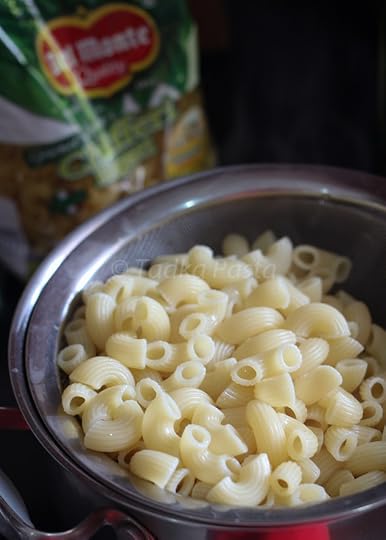
Any short cut of pasta can be used in this salad. We’ve used Del Monte’s Chifferi Rigati, which looks almost like elbow macaroni, but with ridges along its length that help the sauce to cling on to the pasta. We cooked the pasta as recommended by the good folks at Del Monte – in plenty of generously salted water, as this is the only chance to flavour the pasta itself.
Grilled fresh vegetables, al dente pasta and a garlicky yoghurt dressing make this pasta a firm family favourite. We make it a lot in the summer, since it is light and cooling, waist-friendly and comes together quickly. And if you need a dish for a potluck or picnic, our Creamy Pasta Salad with Grilled Veggies is perfect since it tastes wonderful at room temperature as well.
We like to make a big batch and stock this cheese-free yet satisfying pasta dish in our refrigerators to have on hand for a quick meal. You can even add grilled chicken chunks or prawns to the dish to make it even more hearty.
Creamy Pasta Salad with Grilled Veggies
Servings – 4 Serving size – 1 heaped cup salad
Preparation time – 30 minutes Cooking time – 15 minutes
Special Equipment – Grill pan or outdoor grill, or use an iron tava or even an OTG
For the grilled vegetables –
Marinade –
¼ cup thick yogurt
2 cloves garlic, mashed to a paste*
1 teaspoon tomato paste
¼ teaspoon freshly grated pepper
1 teaspoon Italian seasoning or mixed dried herbs
¼ teaspoon red chilli flakes, or to taste
Salt to taste
1 onion
½ zucchini
½ red pepper
½ yellow pepper
3-4 baby corn
8-10 asparagus spears or 3-4 spring onion greens
1 tablespoon oil
Mix together all the ingredients for the marinade in a small bowl.
Peel and then cut the onion into wedges, keeping the root intact so that the pieces stay together. Cut the zucchini into 4 sections length-wise. Cut the peppers into 1″ thick strips. Slit the babycorn lengthwise. Trim away the woody asparagus ends or if using spring onions, cut them lengthwise.
Preheat a grill pan on medium heat, and brush it with a little oil.
Toss the veggies in the marinade and immediately place them on the hot grill. Do not crowd the veggies on the grill, you can grill them in batches instead. Remember to clean the tava with a paper napkin and then drizzle oil before you grill the next batch. Grill the veggies on both sides until softened and starting to char, but still crisp.
Once grilled, cut the veggies into smaller, bite-sized pieces. Set aside to cool.
For the salad –
1.5 cups Del Monte Chifferi Rigati
1 Tablespoon extra virgin olive oil
1 cup thick yoghurt
4 cloves garlic, mashed to a paste*
½ teaspoon lemon juice
1 teaspoon honey or sugar
¼ teaspoon freshly grated pepper
Salt to taste
½ cup fresh basil, loosely packed
A few lettuce leaves, cherry tomatoes, olives and pickled chillies for garnish
Boil the pasta as per the directions on the package, taking care to keep it al dente. Drain and then toss the pasta with the extra virgin olive oil. Set aside to cool.
To make the dressing whisk together the yoghurt, garlic, lemon juice, honey, pepper and salt until smooth. Taste and season if necessary.
Put the pasta in a large mixing bowl. Add the fresh basil, tearing up the leaves into bite-sized pieces. Reserve a quarter cup of the dressing and pour the rest over the pasta. Toss well. Add the grilled veggies to the bowl and mix very gently.
If you are not serving the pasta right away, refrigerate it and the reserved dressing separately in closed containers. Mix in the reserved dressing just before serving. If serving immediately, add in the reserved dressing only if the salad looks dry.
Transfer the salad to a serving bowl lined with lettuce. Add cherry tomatoes, olives and pickled chillies for garnish, as desired.
Enjoy!
* To mash garlic by hand for this recipe, smash the pods with the side of a heavy knife. Remove the skins, then chop the smashed garlic into smaller pieces and mash them up using the side of the knife, adding a few grains of salt to provide an abrasive. You can also use a pestle and mortar.
We’re sending our Creamy Pasta Salad with Grilled Veggies to Del Monte’s #ItalianEscapades campaign
Read more about Del Monte’s pasta, sauces and other popular products here – https://www.facebook.com/DelMonteIndia


August 17, 2015
An afternoon with George Calombaris
We discovered MasterChef Australia fairly late by any set of standards. This happened soon after we moved back to India a little over three years ago. We’ve definitely made up for lost time since, and the show is a firm fixture on our TVs every season now. All the three judges are well-loved and respected everywhere, and getting to meet any of them is such a privilege. So when George Calombaris, celebrity chef, restaurateur and MasterChef judge was in town, we were totally thrilled to be sent an invitation for a meet and tasting with him.
After an introduction and a few questions George Calombaris and his team started plating up the first dish – Ouzo Cured Indian Seabass with Miso Eggplant. Chef explained that the original dish had been planned with salmon but since that did not work out they switched to Indian Seabass.
The peppery spice crust on the fish, the ouzo and the eggplant were a nod to the chef’s Greek heritage. We don’t usually opt to eat fish that’s not felt the heat of the stove, but were pretty glad we tried this. The texture of the fish was very different from anything that we’ve tasted before, and the peppery crunch of the crust as well as the celery set it off very nicely. The eggplant sauce was incredibly smooth, the miso gave it real depth, and a deliciously savoury appeal.
Soon after the chef along with two of his team members from his restaurants in Australia started working on the second dish – Soft Shell Crab Souvlaki. Souvlaki is popular Greek street food – usually a grilled skewer of meat wrapped in pita bread. The chef mentioned that he had not found the bread as per his requirement so he was improvising by using naans for the souvlaki instead of the traditional pita. The filling was crispy fried soft shell crab, being fried aromatically right in front of us.
The souvlakis were prepared by the chef at a speed that would match any busy street vendor’s, and served in paper cones. He urged everyone to “eat them while they’re hot!” and no one needed any further prompting to do just that.
Some fresh lettuce and a schmear of honey-lime-mint dressing was all that came between the crab and the naan. Delicious flavours and such a contrast of textures between the chew of the naan, crunch of the crab and smoothness of the dressing.
Dessert was Salted Caramel Rice Pudding with Almond Biscuit, Rice Ice Cream and crushed pistachios. Again there were plenty of contrasting textures that popped around our mouths as we dug into this creation. The chef talked about how every culture has a rice pudding which infused wild ideas of salted caramel ribbons running through our next pot of kheer.
We loved how friendly, witty and sociable the chef seemed. His down to earth attitude, love for food, his inventiveness, outstanding creativity, affection for his team and his business expertise were evident as we listened to him talk.
It was a really inspiring afternoon. The food, as well as the chef’s banter as he answered questions about everything from his take on molecular gastronomy to his dessert preferences, his aversion to spicy food and his vision for his restaurants.
We thank Zomato and Gold Rush Entertainment for bringing George Calombaris to our city, and for the invitation to meet him. And special thanks to JW Marriot for hosting a wonderful event.



